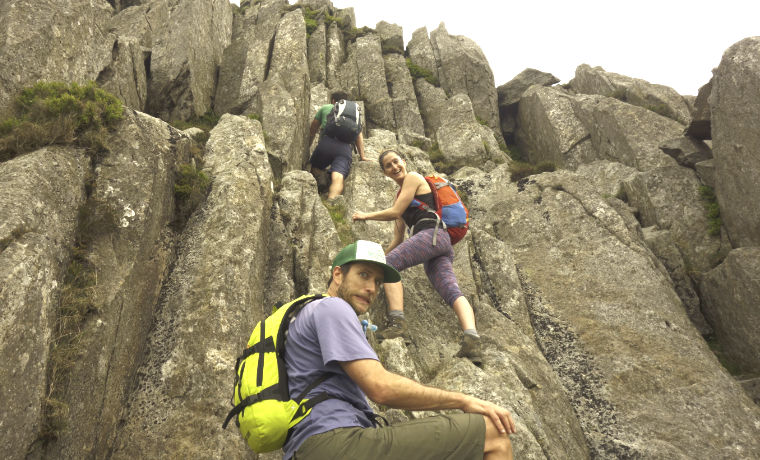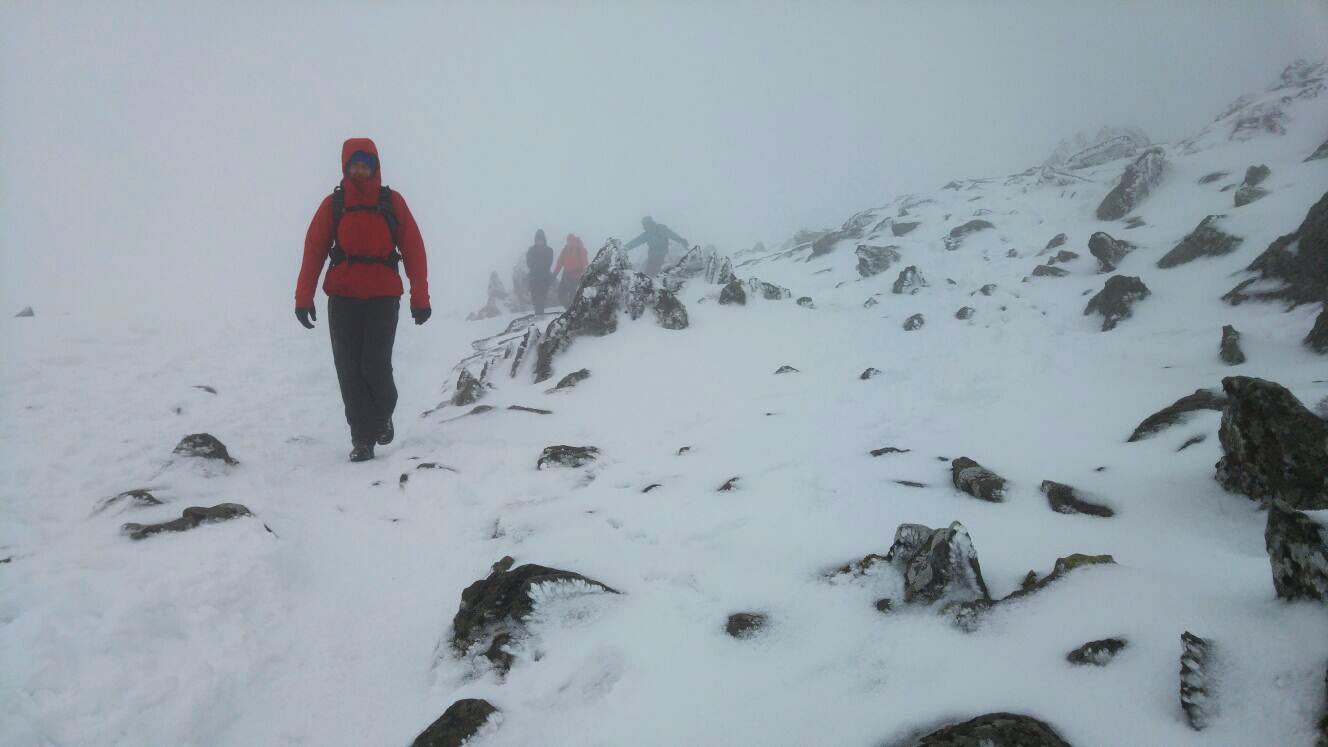People go on adventures for a wide range of reasons. Some do it for the challenge, while others want to commune with nature or experience new things. Others seek out adventures “because they’re there.”
But it could be argued that the most pervasive reason for doing adventurous things is that they’re fun. Fun is something that all humans crave, and a life without fun is boring.
Of course, fun means different things to different people. It’s relative and, like beauty, fun often lies in the eye of the beholder.
Fun is something that all humans crave, and a life without fun is boring
Imagine for a moment you are free-climber Alex Honnold. For him, climbing a 1000-foot cliff without ropes is fun. But, for someone with a severe fear of heights, even watching Alex on TV is a terrifying and decidedly unfun experience.
Luckily, fun can be categorized.
In this article, we’re going to look at the fun scale and explain how you can use it in your own adventures.
What is the fun scale?
While the precise origins of the fun scale are unclear, it was likely invented by big wall climbers in the 1980s. Climbs are typically ranked by their technical difficulty, but using the fun scale meant that climbers could also rate a route for enjoyment or fun.
Broadly speaking, there are three types of fun…

What is type 1 fun?
Type one fun is the type of fun that could pass you by if you weren’t aware that it existed.
Examples of type one fun include:
- Going to the movies
- Having a meal with friends
- Playing sports with your kids
- Going for a leisurely walk or bike ride
- Completing an easy workout
- Going to a show or concert
Type one fun is enjoyable while you are doing it but leaves no lasting impression. It’s basically forgettable. While some people like to blog about their type one fun, those sorts of posts are the ones that make you think, “so f*****g what!” and scroll on by.
I mean, why do I want to see a picture of your “amazing” dinner? Anyway…
That’s not to say that type one fun is in any way pointless or a waste of time. In fact, it’s probably the sort of fun that most people need more of. It’s accessible, relaxing, requires minimal planning, involves no danger, and is very shareable.
Despite scoring so low on the fun meter, type one fun still provides an escape from the mundanity of everyday life. Type one fun is a whole lot better than vegging in front of the TV and wishing that your life was more fulfilling.
And if you DO think that type one fun is social media worthy, you definitely need to expand your horizons and sign up for some type two fun!

What is type 2 fun?
Type two fun is also known as suffering fun. It’s considered by many as the fun “sweet spot.” Type two fun activities push you to the edge of your comfort zone and beyond, requiring significant amounts of mental and physical exertion.
You may even question your ability to complete your chosen activity and wonder what possessed you to start in the first place. Fear is not uncommon during type two fun. You’ll also probably experience a sense of relief when it’s all over.
Type 2 fun examples include:
- Long-distance hikes
- Marathon and ultra-distance running
- Intense rock climbing
- Caving
- Cold-water swimming
- Parachuting
- Long-distance bike races
- A gruelling workout
- Learning a new extreme sport
While type two fun is not always enjoyable in the moment, it’s usually the most rewarding. Type two fun usually provides a tremendous sense of achievement, and memories of type two fun are often the most cherished.
While type two fun activities can involve an element of danger, that danger is typically tightly controlled. For example, climbing with a safety rope is, for many, a type two fun activity.
This is the sort of fun that IS social media-worthy!
What is type 3 fun?
It’s almost a misnomer to say that type three fun is fun at all. Type three fun is extreme, often life-threatening, and about as far from enjoyable as you can get. Type three fun is usually unplanned and often accidental.
Examples of type three fun include:
- Being shipwrecked
- Being buried under an avalanche
- Getting caught in a flash flood in a slot canyon
- Capsizing and then losing your kayak
- Getting lost in a whiteout
- Getting stuck part-way up a rockface and needing to be rescued
The only redeeming thing about type three fun is that, assuming you survive, it will provide you with a story to tell. It may also be a learning experience, as in, “well, I won’t be doing THAT again anytime soon!”
So, in summary, type one fun is easy to find and often part of everyday life. In contrast, type three fun is best avoided as it usually means your life is in danger. Type two fun offers the greatest rewards for the lowest risk, and most people need more of it.

The benefits of type two fun
Type two fun requires time, energy, planning, resources, and usually money. It’s usually not the sort of thing that happens by accident. This leaves many people wondering why they should even bother with it.
After all, type two fun invariably involves a degree of discomfort and suffering, and who needs that?
The good news is that type two fun offers several benefits, even if, in the moment, you aren’t having a great time.
The benefits of type two fun include:
01Pride and a sense of achievement
Activities that score two on the fun scale are usually challenging, and you’ll need to push yourself to complete them. Invariably, at some point, you’ll question your ability to finish what you started and may want to quit.
But, as you keep pushing ever onward, you’ll close in on your goal, and your activity will come to an end.
You did it!
Completing something you thought impossible will leave you feeling proud and with a huge sense of achievement. That high can last for weeks.
Of course, to reach the same high, you’ll need to go harder, faster, higher, further, etc., next time. But that’s the nature of adventuring!
02Improved resilience
Type two fun teaches you to become comfortable with being uncomfortable. You discover your limits and then learn how to push beyond them. This makes the rest of your life feel easier by comparison.
For example, I spent the Christmas and New Year of last year in hospital, having suffered a bowel obstruction that required emergency surgery to fix. Major bummer.
But, while this was definitely a setback, I also knew I’d been through worse and had the mental and physical strength necessary to bounce back.
A couple of weeks in hospital? No sweat! I completed 30 weeks of Royal Marine training to earn my green beret. And while that was over six months of non-stop type two fun, I’ll always be grateful for the determination it bred into me.
Type two fun gives you the strength to overcome the obstacles in your life. Once you’ve pushed yourself to your limits, things like asking your boss for a pay rise, starting a business, dealing with setbacks, and overcoming tragedy won’t seem so overwhelming.
03Expand your adventure horizons
Once you get a taste of type two fun, you’ll need to extend yourself even more to match that experience. It’s like working out to get fitter.
At first, easy workouts leave you feeling sore and tired. But, gradually, your body adapts, and you can exercise harder and longer. You may even start to enjoy working out.
Type two fun has a similar effect. Initially, even tame adventures can leave you questioning your sanity and ability to complete them. But, complete them you do, so you look for bigger, more exciting adventures for the future.
A two-day hike becomes a week-long hike, and then, before you know it, you’re hiking the length of Wales along the Offa’s Dyke footpath and wondering if you could do the Appalachian Trail.
04Memories
Type two fun should create lasting memories. As the discomfort fades, it’s replaced with feelings of satisfaction and pride. You may even laugh at what was, at the time, actually quite unpleasant.
An adventure that produces type two fun should give you a great story to tell. If it was a shared experience, it will also strengthen interpersonal bonds.

Type 2 fun – closing thoughts
Type 2 fun is rewarding and life-affirming. However, it’s important to remember that people experience fun differently, and what’s fun for one person may not be fun for another. For example, you might love whitewater kayaking, but someone else may feel entirely overwhelmed by the experience.
A couple of years ago, my wife and I went on a winter snow hike. I was having a great time, and I very much felt like it was type one fun.
we all have different ideas of what’s fun and what is not
However, my wife’s experience was definitely type two, and at one point, she sobbed, “I just want to be home!” She’d really had enough at this point, but we still had several more miles to go. Divorce was threatened, but in the end, it was nothing that a big mug of hot chocolate couldn’t fix.
Our recollections of that day are VERY different. What I remember as an easy hike in the snow she calls our polar expedition.
I’ve also been on the receiving end of a fun scale discrepancy. A friend of mine led me up a steep sea cliff climb, which he scaled easily. For him, it barely registered on the fun scale and probably bordered on boring.
In contrast, I fell off and couldn’t get back to the rock face because of an overhang. I was swinging in space and needed to perform a self-rescue by fashioning prusik knots from my shoelaces. I ended up climbing the safety rope and, despite a good head for heights, I was TERRIFIED!
These examples go to show that fun is relative, and we all have different ideas of what’s fun and what is not.
So, seek out level two fun activities, but also take care not to let them turn into level three. Level three fun is memorable for all the wrong reasons!



